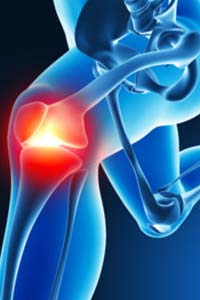Sports Injuries: Fractures and Contusions
When deciphering between contact sports injuries vs. non-contact sports injuries, finding the distinction between overuse vs. acute/traumatic injuries can be a dominate factor in early observation of the ailment. The risk of acute injury to an individual while competing in a sporting event is classified into three categories:
- Contact
- Limited contact
- Non-contact
Tackle football comes to mind first when thinking of contact-sports. Did you know that cheerleading, gymnastics, diving and ultimate Frisbee are also categorized as contact sports? That’s why it is important to further split contact sports into two sub-categories: collision sports and contact sports.
WHAT’S THE DIFFERENCE BETWEEN CONTACT, COLLISION AND NON-CONTACT SPORTS INJURIES?
In collision sports like tackle football, ice hockey, lacrosse and rodeo, athletes intend to collide with opponents, the ground, baseboard or stick during gameplay with extreme force.
In contact sports like basketball and soccer, athletes intend to make contact with other players, commonly with less force than in a collision sport.
In limited-contact sports like baseball, softball and volleyball, contact with other competitors from the same team and the opposing team is sporadic at best but can occur, while uncommon, collision type injuries in these sports can occur.
In non-contact sports like tennis, golf and power-lifting, collision and contact type injuries are rare but do happen.

COMMON SPORTS INJURIES
For non-contact sports, take tennis for example, microtrauma or overuse injuries are common. Microtraumas develop when small tears in fibers and connective tissue rip apart in muscles. Microtraumas can occur in tendons, ligaments, joints and bones resulting in sprained ligaments, strained muscles and overstretched tendons. Individuals with a microtrauma injury should seek medical attention as soon as possible in order to get the ailment evaluated, treated and in some cases, referred to an orthopaedic surgeon and sports medicine specialist for further evaluation.
One of the most common collision sports injuries is a concussion. A concussion is a mild traumatic brain injury (mTBI) from a blow to the head resulting in a temporary loss of brain function. Symptoms can include:
- Headache
- Loss of consciousness
- Confusion
- Dizziness
- Ringing in the ears
- Nausea
- Slurred speech
Immediate medical attention should be sought for a concussion to evaluate the severity of the brain injury and treatment plan.
IS ONE TYPE OF SPORT INJURY MORE COMMON THAN OTHERS? HOW SHOULD I GO ABOUT FINDING A TREATMENT PLAN?
Some of the most common sports injuries occur in football, basketball and cycling. Lower limb injuries, particularly sprains and strains of the lower limbs, are common in football and basketball, followed by upper limb and head injuries. Of those head injuries, scrapes and contusions lead the way. In cycling, due to the extreme force exerted in a fall or crash, two-thirds of injuries are limb contusions and scrapes. Head injuries, also in the form of contusions and scrapes, are the most common ailment associated with bicycling injuries.
It is important to note that about 80 percent of sports injuries happen within the musculoskeletal system. Remember, if an injury does occur, if at all possible, write a brief description of the type of injury and if it is contact or a non-contact injury. Find an orthopaedic surgeon and sports medicine specialist who focuses in the type of injury and begin a tailored treatment plan to get back on the court or field again.
